
An ammonite fossil, known in English folklore as a snakestone, with a carved snake head.
undefinedSnakestones: The myth, magic and science of ammonites
Kerry Lotzof
We now know ammonites are extinct cephalopod molluscs related to squids and octopuses, which lived in the seas of the Mesozoic Era between about 201 and 66 million years ago. Their shells are preserved as fossils.
But before science had an answer, ammonite fossils were mysterious objects that gave rise to rich and fascinating folklore all over the world.
What are snakestones?
The fossilised remains of ammonites were given the name snakestones in England because they resemble coiled snakes turned to stone.
Dr Paul Taylor is a palaeontologist at the Natural History Museum and has an interest in fossil folklore.
“Stories about snakestones came primarily from two places where ammonites are very common and easy to find: Whitby in Yorkshire and Keynsham in Somerset,” he says.
Early map maker William Camden mentioned the peculiar formations in his book Britannia, which was published in 1586:
“If you break them you find within stony serpents, wreathed up in circles, but eternally without heads.”
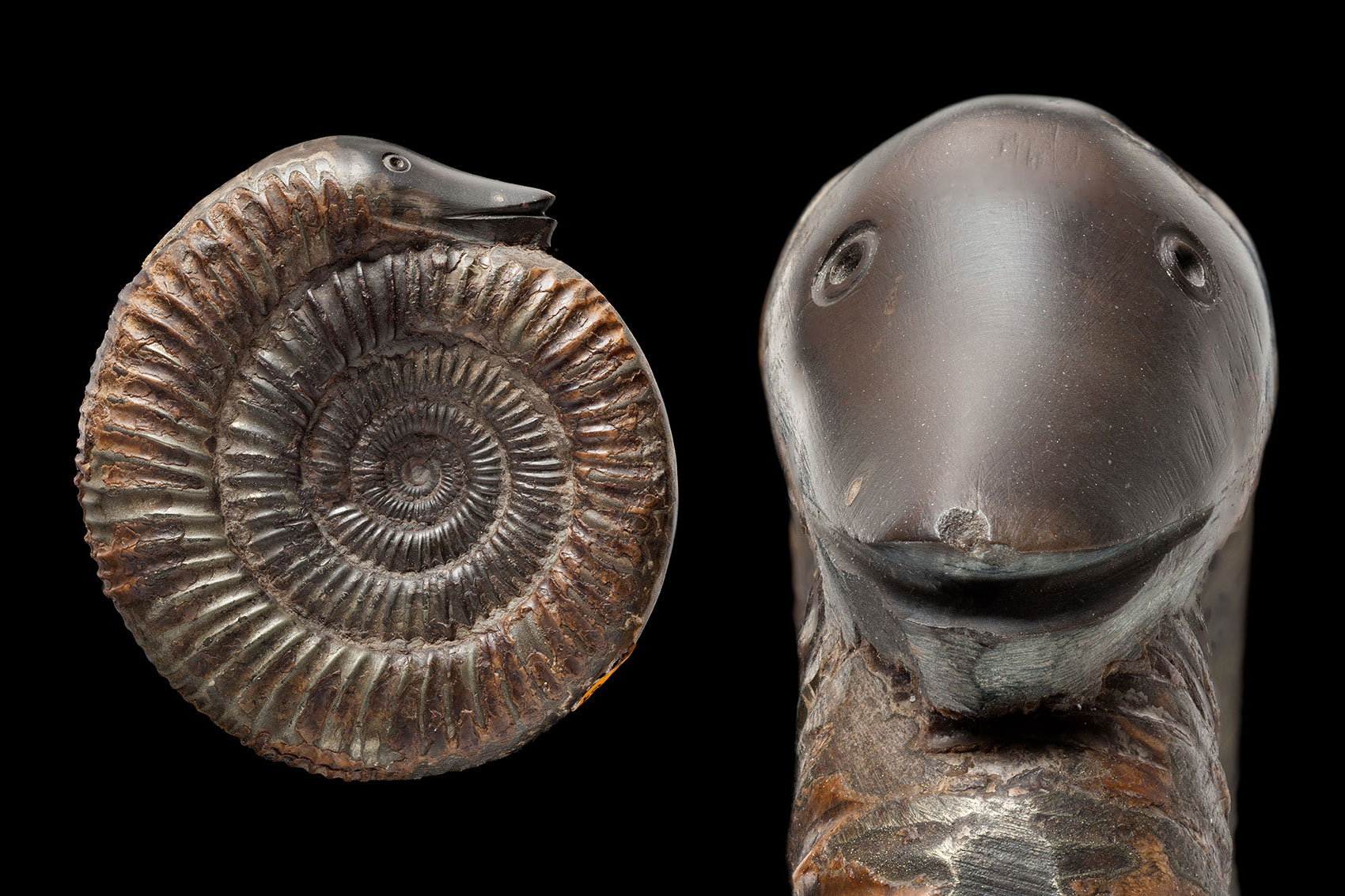
To reinforce the legend of their origin and make them more saleable, enterprising Victorians carved snake heads on the ammonite fossils.
Saint Hilda’s Spell
In Whitby, the legend of snakestones dates to the seventh century and the story of the Saxon Abbess Saint Hilda (614-680).
Charged with founding an Abbey in Whitby, St Hilda first had to rid the region of an infestation of snakes.
“In early Christian times, snakes had a bad reputation and were associated with the Devil, so it was important to clear the area before a sacred building could be established,” Paul explains.
“According to legend, Hilda cast a spell that turned the snakes of Whitby to stone and threw them from the cliff tops.”
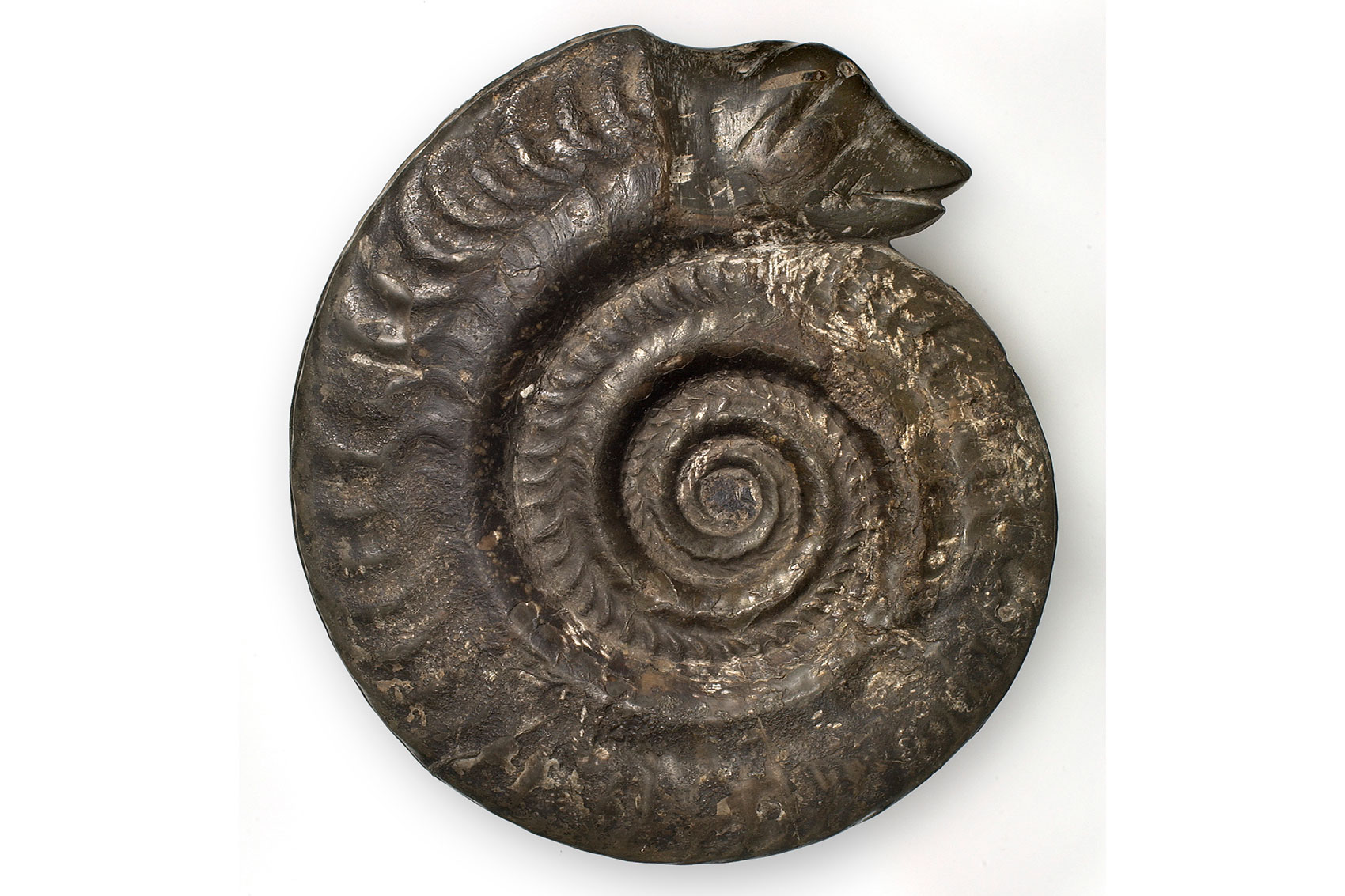
Named in honour of St Hilda, Hildoceras bifrons is a type of ammonite that lived in the Early Jurassic Period. It’s one of the most common ammonites present at Whitby. This example has a carved snake’s head.
St Hilda’s miraculous work was immortalised in the poem Marmion, by Sir Walter Scott:
When Whitby’s nuns exalting told,
Of thousand snakes, each one
Was changed into a coil of stone,
When Holy Hilda pray’d:
Themselves, without their holy ground,
Their stony folds had often found.
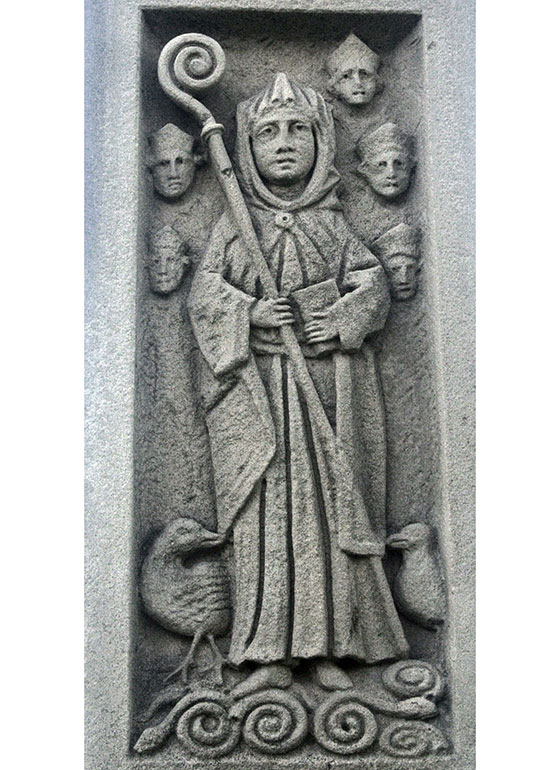
A depiction of St Hilda with snakes at her feet, from a monument in the graveyard of St Mary’s Church, Whitby in Yorkshire.
Image CC0, via Wikimedia Commons
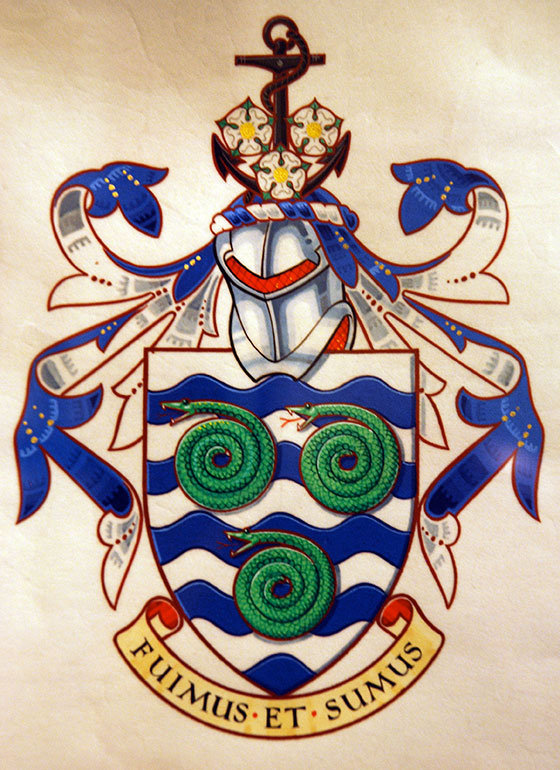
Three ammonites – with snake heads attached – became the heraldic device in the coat-of-arms of Whitby.
Credit: Paul Taylor
St Cuthbert’s Curse
The legend of Whitby’s snakestones sometimes also involve St Cuthbert, a seventh-century monk who is also known for his rosary made of fossil crinoids – St Cuthbert’s beads.
“The versions of the legend that include St Cuthbert help explain the headless state of Whitby’s snakestones,” says Paul.
“He’s said to have cast a powerful beheading curse on all of the snakes.”
St Keyna’s prayers and fossil fairies
In Keynsham in southern England, similar myths developed to explain the abundance of snakestones in the area.
“In Keynsham it was St Keyna, a devout British virgin who lived in serpent-infested woods, who turned the serpents into stone through prayer,” says Paul.
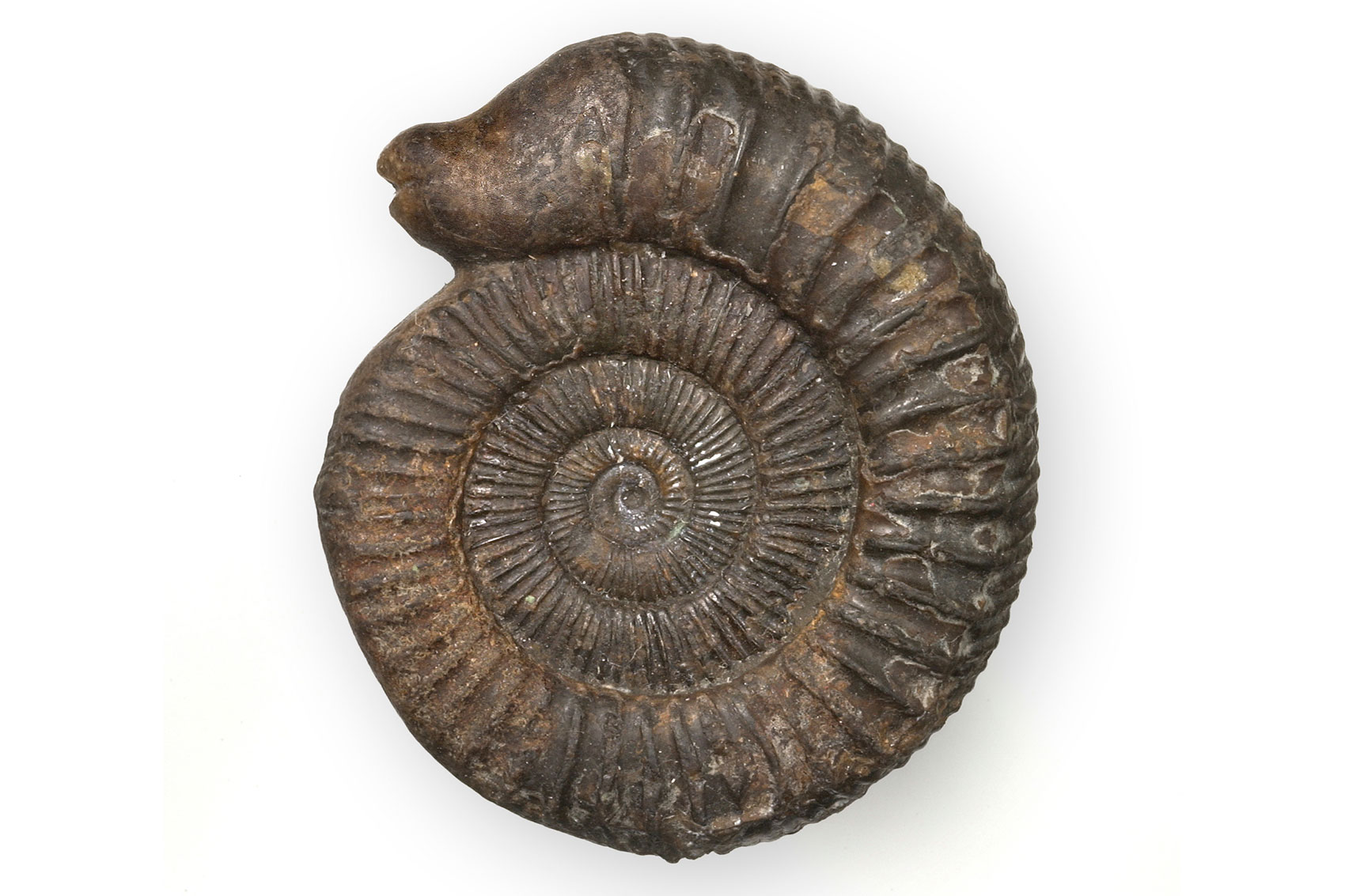
A carved ammonite, or snakestone, from the Museum collection
In other stories, snakestones were believed to have once been fairies, changed into snakes before they were petrified.
Ammonite folklore around the world
Ammonites are relatively common fossils and examples have been found on every continent.
“Their geometry and beauty have captured the human imagination since at least Mesolithic – Middle Stone Age – times and have given rise to many origin myths and beliefs about their magical and medicinal properties,” Paul adds.
Horns of Ammon
Early Greeks saw ammonites as sacred symbols associated with the horned god, Jupiter Ammon.
“They called them Cornu Ammonis – horns of Ammon –from which the scientific name ‘ammonite’ is derived,” says Paul.
Ammonites were also used as protection from snakebites and cures for blindness, barrenness and impotence.
Predicting the future
Ancient Romans believed that sleeping with a golden – pyritised – ammonite from Ethiopia under their pillow could help the dreamer predict the future.
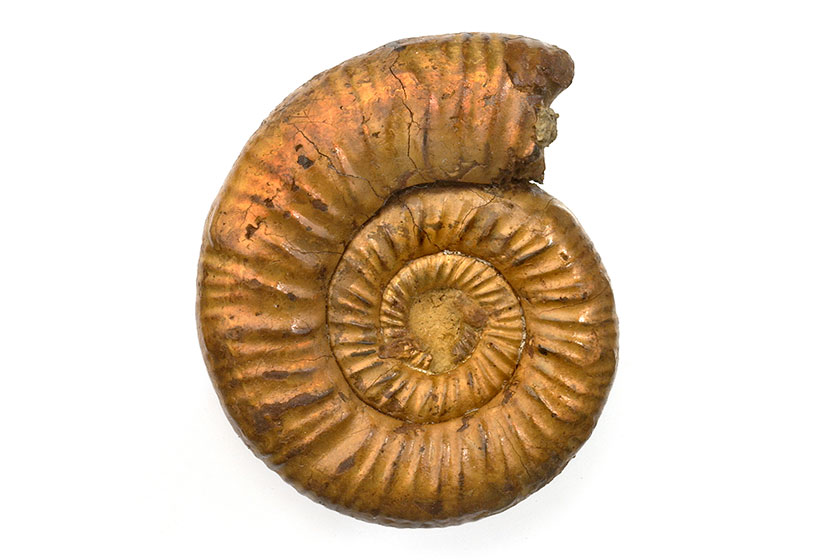
This Jurassic ammonite looks like it has been dipped in gold, but its colour is due to the mineral iron pyrite – often referred to as fool’s gold.
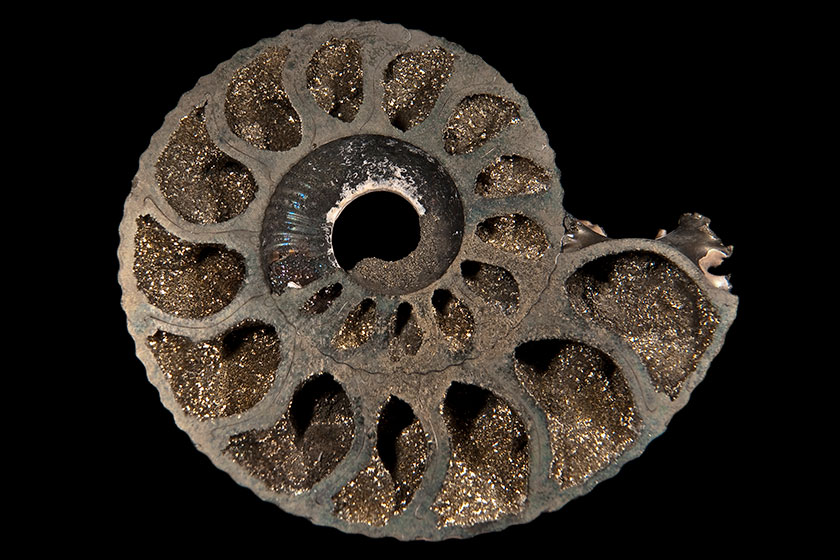
Cross-section through a glittering, pyritised ammonite. Find out how different types of fossils form.
© Didier Descouens (CC BY-SA 4.0), via Wikimedia commons
Vishnu’s chakra
In Hindu culture, black limestone concretions containing ammonites are known as saligrams – or shaligrams or salagramas – and considered extremely precious for their resemblance to the disc – chakra – held by the god Vishnu.
“The stones are kept in temples, monasteries and households as natural symbols of the god Vishnu, and are used during marriages, funerals and housewarmings,” Paul adds.
Vishnu’s chakra is a Hindu symbol of absolute completeness. The eight spokes are believed to represent the eightfold path of deliverance. The radial chakra markings in saligrams are formed by the ribs of the ammonites.
Saligrams are mentioned in Sanskrit texts dating back to just over 2,200 years ago. Some Sanskrit poetical works identify them as fossils created by a kind of worm.

True saligrams are found only in the valley of the Gandaki River in Nepal and northern India. Typically spherical, they contain black-coloured ammonite fossils from the Jurassic and Cretaceous periods.
© Govtul (CC BY-SA 3.0), via Wikimedia commons
Horn Stones
In Chinese folklore, ammonites were called Jiaoshih or horn stones, as they resemble coiled rams’ horns.
Eleventh-century Chinese scientist and stateman Su Sung wrote in Pen Tshao Thu Ching:
“The stone-serpent appears in rocks which are found beside the rivers flowing into the southern seas. Its shape is like a coiled snake with no head or tail-tip. Inside it’s empty. Its colour is reddish-purple. The best ones are those which coil to the left. It also looks like the spiral shell of a conch. We don’t know what animal it was which was thus changed into stone.”
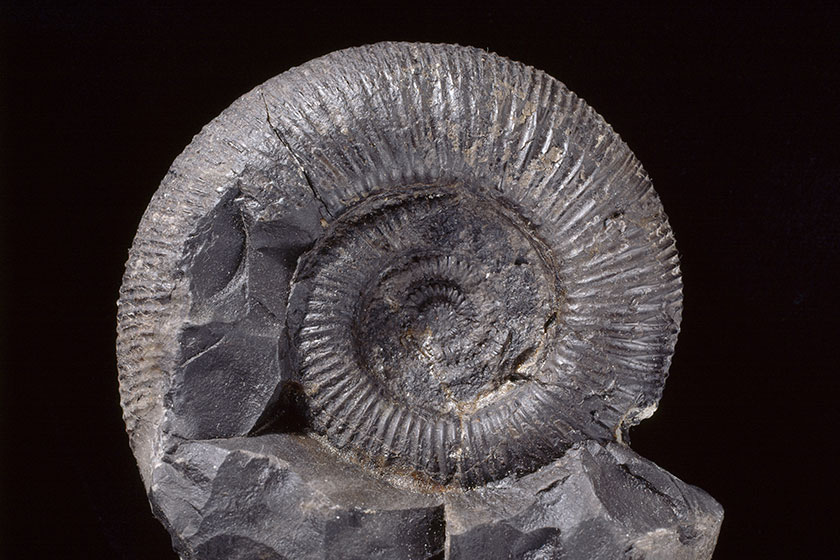
An ammonite fossil collected from more than 5,000 metres above sea-level in the Himalayas in Asia. Unlike snails, ammonites coil in one plane and are neither left- nor right-handed.
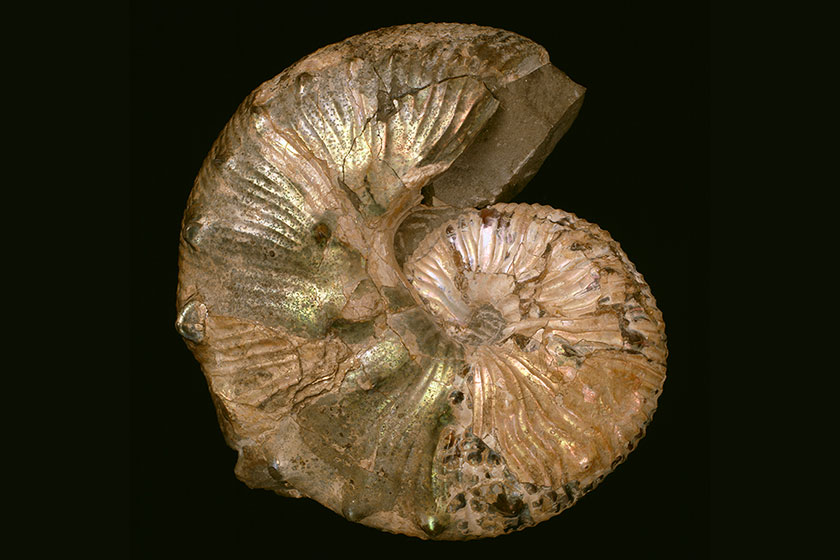
We now know that ammonites were sea creatures with a shell. Much of the original shell of this ammonite from the Cretaceous Period is preserved, giving the fossil a beautiful pearly shine.
Buffalo stones
Among the Blackfoot people of North America, ammonites were called insikim or buffalo stones, because they look like sleeping bison. They were used in special ceremonies to corral bison herds.
“It was believed that buffalo stones could procreate, a mother stone hatching baby stones. This may be because of the tendency of ammonites to fragment along the septa that separate the chambers of the shell,” says Paul.
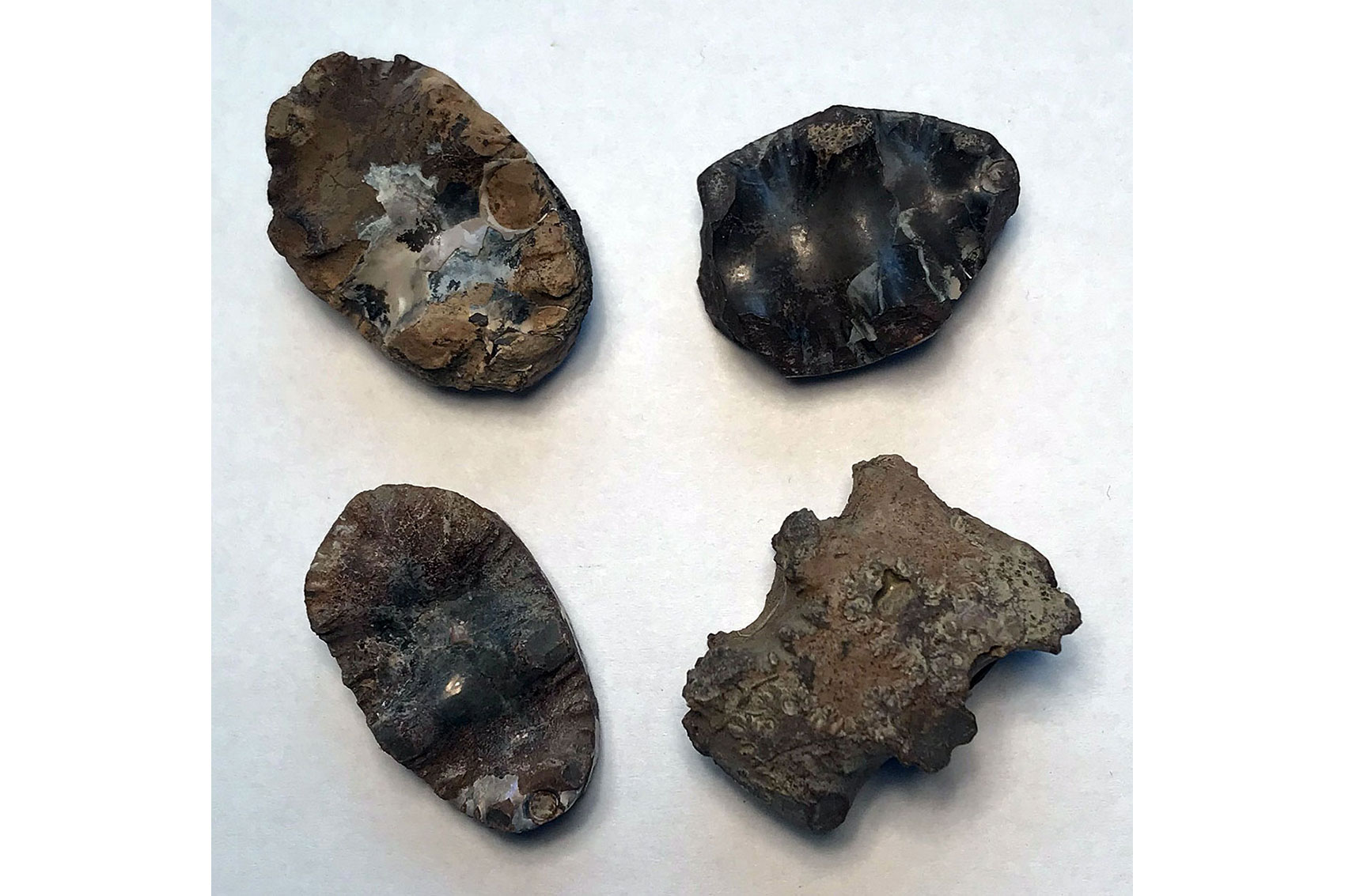
Some buffalo stones, which are fragments of ammonite fossils sacred to the Blackfoot people of North America.
Credit: Paul Taylor
Practical applications for ammonite fossils
Ammonites were considered to have applications for hunting and agriculture in many places around the world, not just in North America.
“In New Guinea, members of the Tifalmin tribe who lived on the Upper Sepik River used ammonites as charms to help with hunting and agriculture,” says Paul.
In Europe, ammonites named variously as dragonstones, crampstones and snakestones were all put to practical use.
Dragonstones
Farmers from the Harz Mountains in Germany used ammonites, which they called dragonstones, as medicine for farm animals.
“They believed that adding a dragonstone to the milk pail would help ensure the return of milk to cows that had stopped producing,” Paul explains.
Crampstones
“In some parts of Scotland, ammonites were known as crampstones and were used for treating cramp in cows,” says Paul.
“The afflicted cow was washed with water in which an ammonite had been steeped for some hours.”
Ammonites were put to similar uses by farmers in Cornwall, although they were called snakestones there. In his Survey of Cornwall, Richard Carew (1555-1620) writes:
“Beasts which are stung, being given to drink of the water wherein this stone has been soaked, will therethrough recover.”
Ammonites were also considered useful for the treatment of bites and stings.

Ammonites went extinct 66 million years ago. This is a nautilus, the nearest living relative of ammonites.
© Manuae (CC BY-SA 3.0), via Wikimedia Commons
Ammonites today
Scientists now know that ammonites are extinct molluscs that jet propelled themselves through the oceans of the Mesozoic Era. They died out at the same time as dinosaurs 66 million years ago. Their nearest living relative, the chambered nautilus, is considered a ‘living fossil’.
Discover more about ammonites and ocean life in the Jurassic.
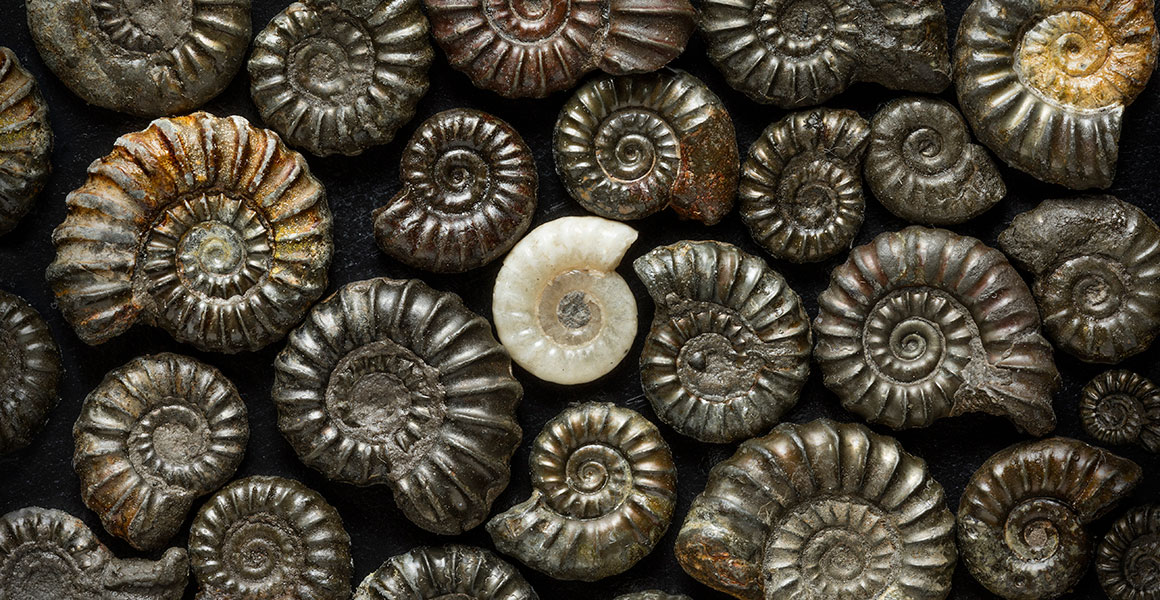
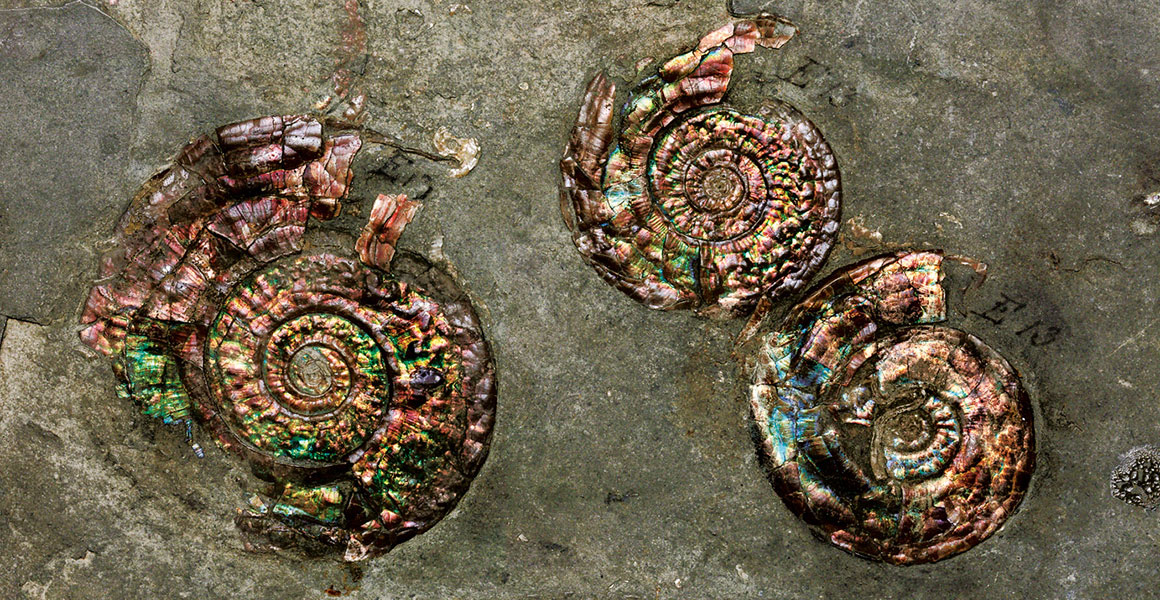
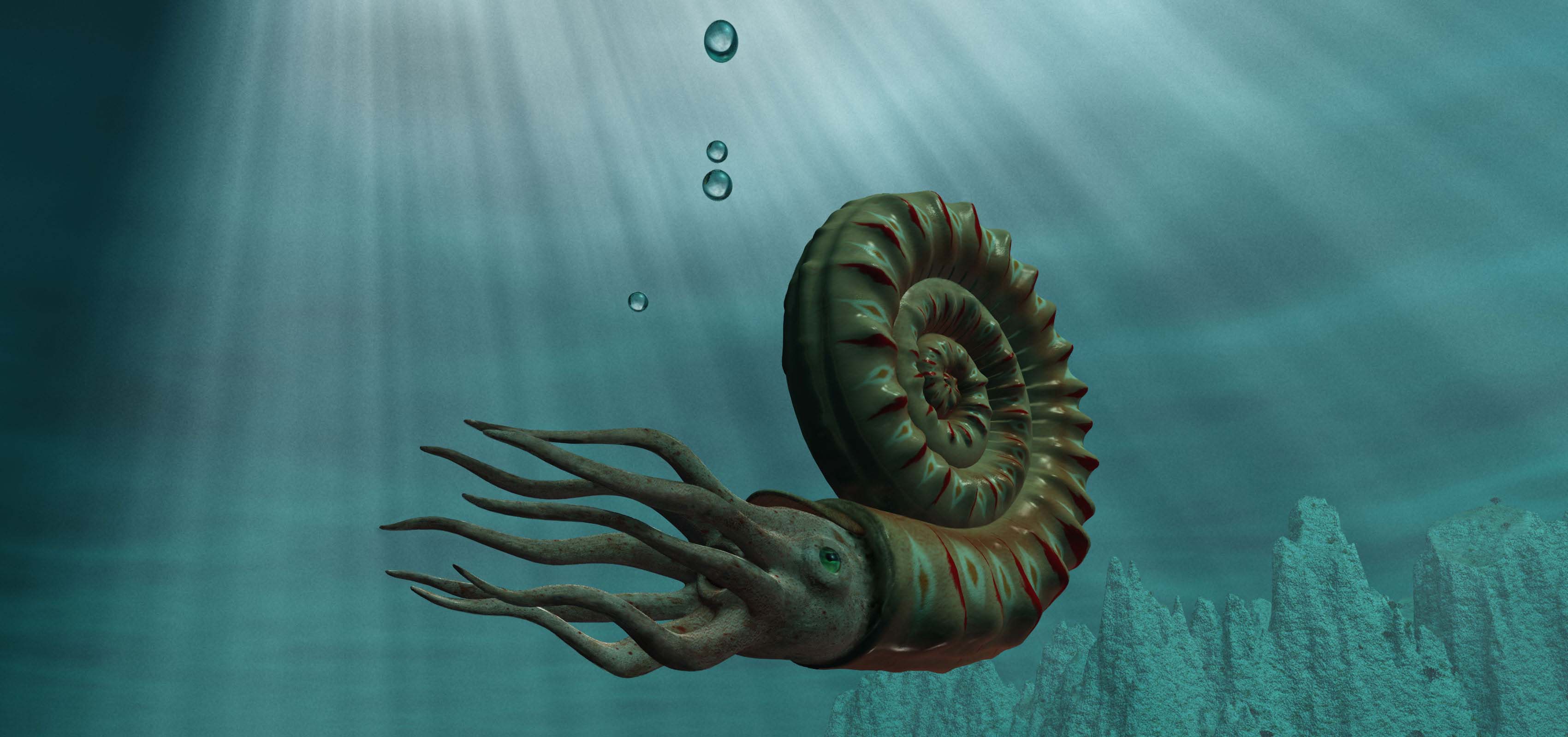

Don't miss a thing
Receive email updates about our news, science, exhibitions, events, products, services and fundraising activities. We may occasionally include third-party content from our corporate partners and other museums. We will not share your personal details with these third parties. You must be over the age of 13. Privacy notice.
Follow us on social media